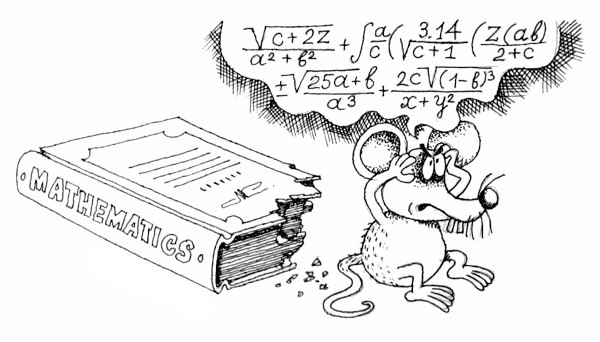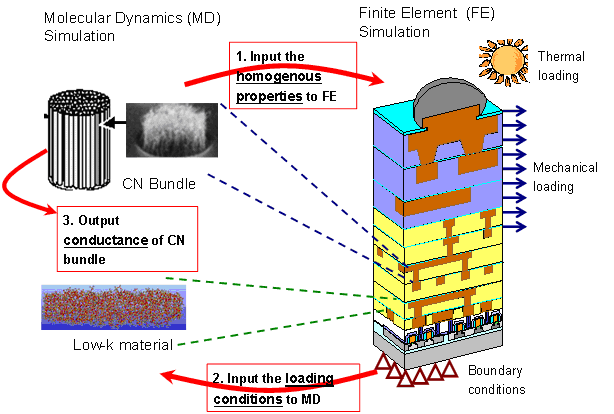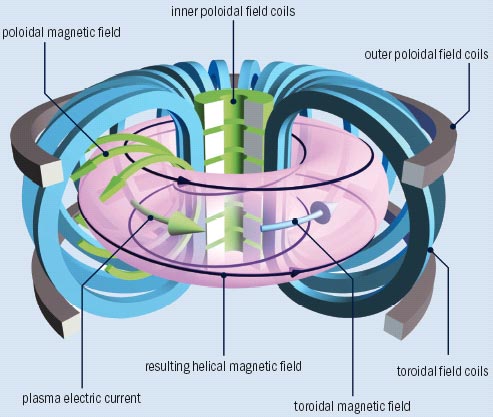Research Interests

Our research is focused mainly on three classes of problems related to the kinetics of chemical reactions and the atomic/electronic structure calculations of the defects in solids, as well as plasma physics.
One of our main aims is the study of many-particle (cooperative) effects in kinetics of bimolecular reactions in condensed matter, including radiation defects. Most of this research is based on a novel formalism of many-particle densities described in our book [E.A. Kotomin and V.N. Kuzovkov, "Modern aspects of diffusion-controlled reactions" (Amsterdam: Elsevier, 1996)].
Surface-induced reactions are known to play a very important role in heterogeneous catalysis. We study these reactions with emphasis on such fundamental phenomena as pattern formation, reactant self-organisation, regular and irregular reactant concentration oscillations as well as chaotical behavour in the case of simple reactions on low-index crystalline surfaces. Another two activities deal with the growth mode of thin metallic films on oxides and diffusion in ceramics, composites and heterogeneous media which is of great importance for the interpretation of experimental data.

Fig.1. Sequence of snapshots of the model of CO oxidation on Pt(110). The bottom part shows the chemical species: CO particles are red, O particles are blue, and empty sites are black. The top part shows the structure of the surface: α phase sites are black, and β phase sites are white. From left to right, we show sections from the lower-left corner with sizes 4096 x 4096, 1024 x 1024, 256 x 256.
We use first-principles (ab initio) methods of parallel computer simulations, molecular dynamics, as well as empirical, shell modelling of numerous prospective technological materials used, e.g. in cathodes of solid oxide fuel cells and lithium batteries. For advanced perovskites and ferroelectrics, we mainly simulate defect-induced and surface-induced processes.
In our theoretical studies (closely cooperated with experimental groups) we combine fundamental research (the Anderson localization problem) with very applied and technologically important problems (new nanomaterials).
Large scale theoretical modeling of advanced technological and nano-materials for energy applications
- The thermonuclear reactor development [new construction materials, e.g. ODS steels, plasma stability control, gyrotron development]
- New actinide nuclear fuels for generation IV fast reactors [nitrides and carbides],
- High capacity lithium batteries
- Solid oxide fuel cells for effective conversion of chemical energy into electricity
- Heterogeneous catalysis
- Ceramic membranes for CO2 separation from smoke of traditional fossil (coal) stations
- Carbon and nitride nanotubes and interconnects for the micro- and nanoelectronics
Solution of these challenging problems needs search and study of fundamentally new materials which properties could be predicted theoretically before experimental try-and-error search. This is especially true for very expensive reactor experiments. This is the more so since properties of nano-materials can differ fundamentally from those for traditional bulk solids.
This interdisciplinary research has a strong International dimension. We closely collaborate with experimental laboratories at ISSP and 18 European, Japanese, and USA research organizations, including Max Planck Institute for Solid State Research, Stuttgart, Germany (new advanced materials for fuel cells and Li batteries), EC Institute for Transuranium Elements in Karlsruhe [modeling of new nuclear fuels], Institute for Materials Research-1, Research Center Karlsruhe (steels strengthened with yttria nanoparticles), University La Sapienza, Rome, Italy [nanotubes and interconnects], St. Petersburg University (new methods for advanced quantum chemical simulations), Northwestern University, Evanston, USA (reactivity and catalysis on oxide surfaces) etc.
We combine a wide range of modern theoretical techniques, including analytical formalisms and large-scale parallel computer simulations (quantum chemical methods, molecular dynamics, stochastic simulations, mode competition simulations, as well as Monte Carlo/cellular automata modeling).
Our research is performed in cooperation with many partners (see more Collaborations), in the framework of a number of integrated programmes, e.g., EUROATOM (both fission [modelling of advanced nuclear fuels] and fusion [Y-strengthened radiation-resistant steels]), as well as CATHERINE (CNT nanoelectronics).

Scheme of the multiscale simulation of CNT-interconnected IC backend structure

In our research, we pay a great attention to real technological problems. In particular, our participation in the development of high-power high-frequency gyrotrons is strongly driven by the needs of fusion technology. Gyrotrons are superior to other rf sources in the frequency range relevant for electron cyclotron resonance heating (ECRH), or about 170 GHz for ITER. Our laboratory (leader O.Dumbrajs) is participating in the development of the European Gyrotron in close collaboration with Forschungszentrum Karlsruhe in Germany within the framework of the Grant Agreement F4E-2008-GRT-08.. Here the main emphasis is put on development of advanced codes for calculating various effects, e.g. onset of stochasticity and hysteresis, in gyrotron resonators.